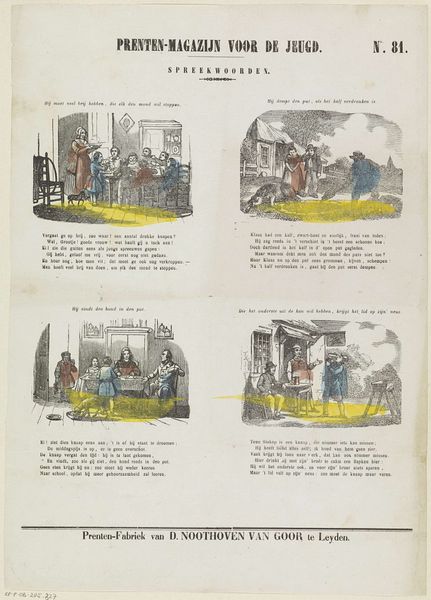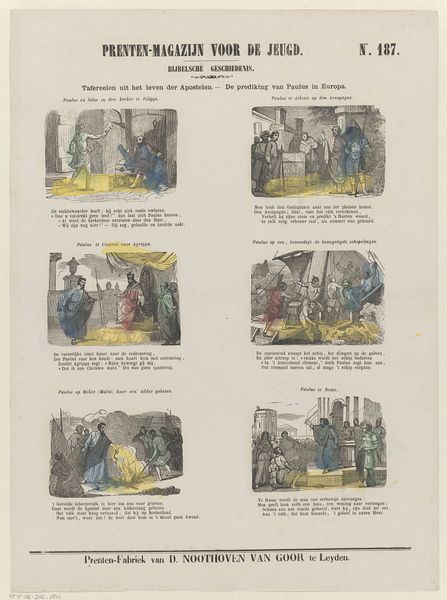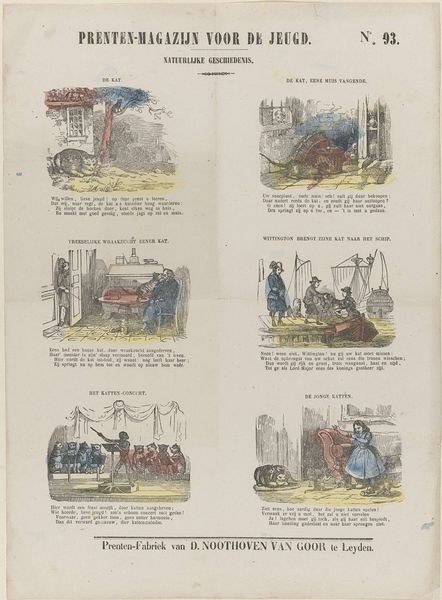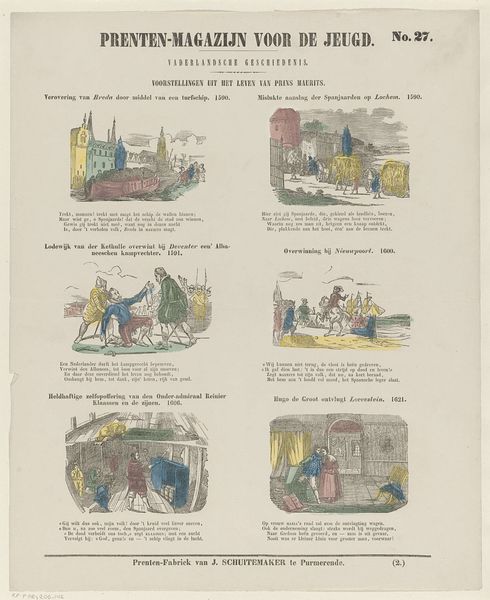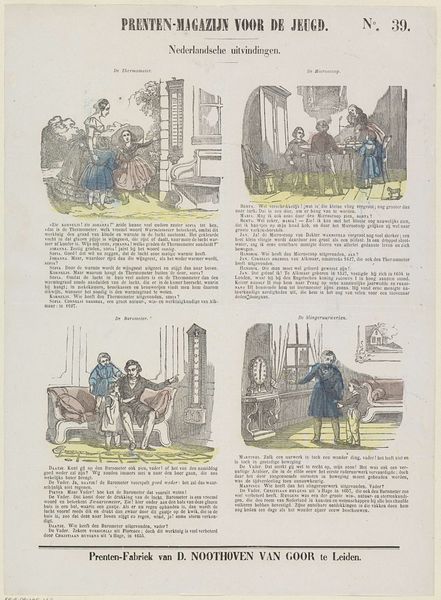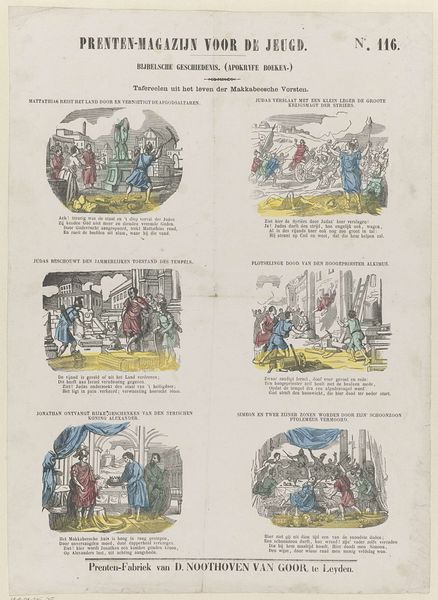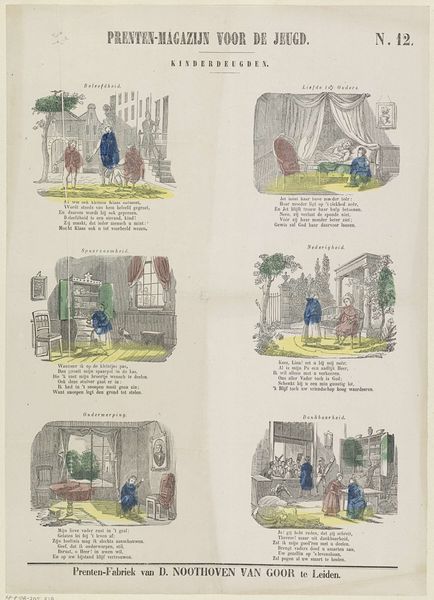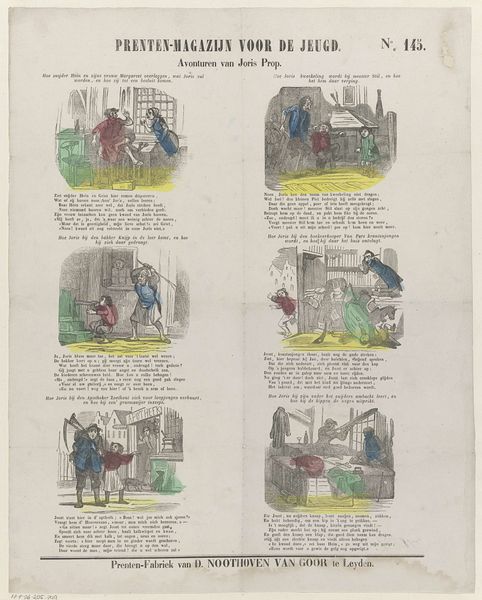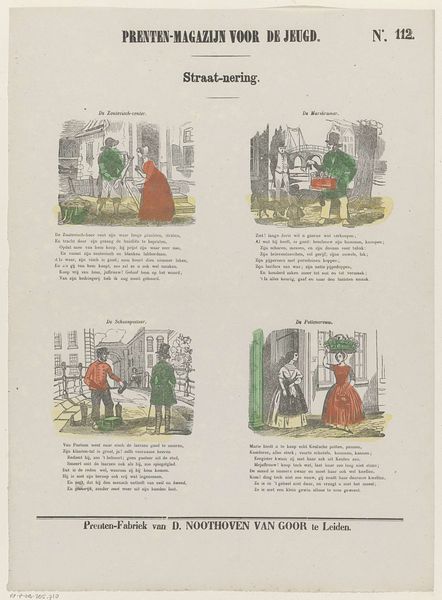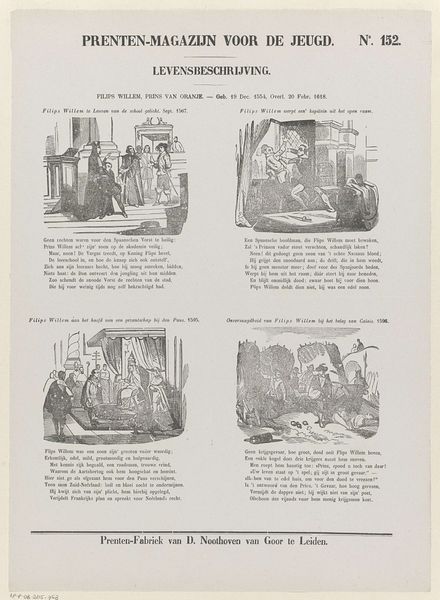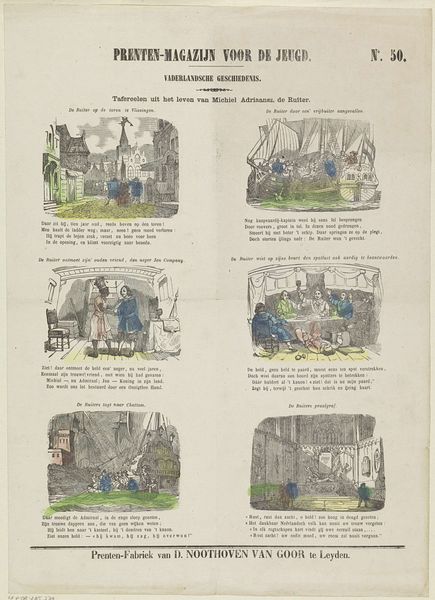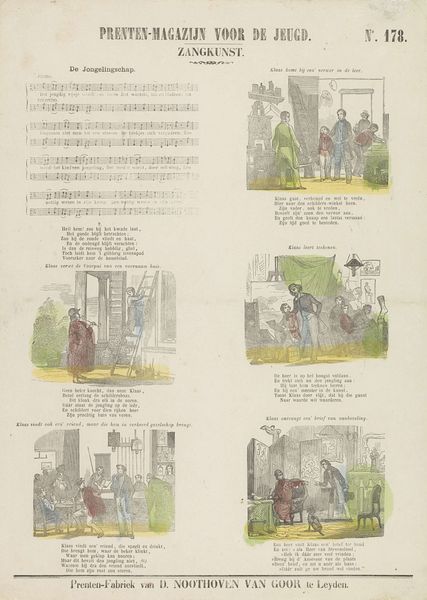
graphic-art, print
#
graphic-art
#
narrative-art
# print
#
ukiyo-e
#
comic
#
genre-painting
Dimensions: height 422 mm, width 302 mm
Copyright: Rijks Museum: Open Domain
Editor: This print from somewhere between 1850 and 1881, by Dirk Noothoven van Goor, is titled "Pieter Nieuwland." It looks like it's made with graphic art techniques. There's a series of four little scenes and quite a bit of text, all within a larger rectangular print. What draws your eye when you look at it? Curator: Immediately, I'm drawn to the fact that this is a print, seemingly mass-produced. What was the function of such printed images during the late 19th century, especially with the explicit mention, as we can see, of being part of a magazine *for* youth. Were these purely didactic, instructional tools or did they serve another, perhaps even subtly propagandistic purpose in shaping young minds of the time? And who was Dirk Noothoven van Goor, and what kind of print-factory did he operate, producing such "magazines" for youth? Editor: I see your point. Thinking about mass production, how does this fit into, say, the history of printed images overall? Is it cheap production values, maybe, or something else? Curator: The image suggests the kind of production processes – inexpensive printing methods combined with simplistic, almost cartoonish figuration to appeal to a younger audience. It’s a business model. Did the accessibility and affordability of these images change the nature of art appreciation and the development of individual and collective tastes? Was visual literacy a tool for social mobility? Editor: So it's about more than just the image itself. It’s also about the means of production. Curator: Exactly. The print points to a moment in which artistic creation and labor were undergoing massive change through new technologies of reproduction. A cultural product that encapsulates historical shifts in industrial manufacturing processes as much as aesthetic intention. Editor: I see it so differently now, understanding it as a process, almost as a piece of material culture, not just an illustration.
Comments
No comments
Be the first to comment and join the conversation on the ultimate creative platform.
